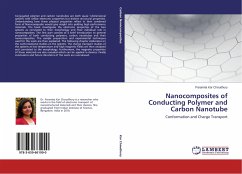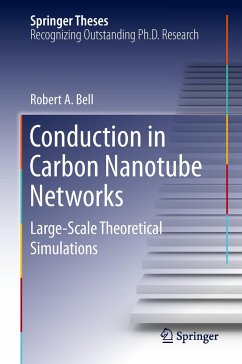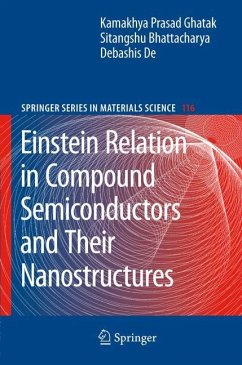
Properties and Applications of Carbon Nanotube Films
A Revolutionary Material for Transparent and Flexible Electronics
Versandkostenfrei!
Versandfertig in 6-10 Tagen
45,99 €
inkl. MwSt.

PAYBACK Punkte
23 °P sammeln!
Since 1950, the adage has been "silicon for electronics, carbon for life." However, the discovery in 1993 of the single-wall carbon nanotube (SWNT), sparked interest in everyone from scientists to VCs over the electric potential of SWNTs, particularly for use in flexible or printable electronics. This book provides an overview of the fabrication, properties, and applications of thin films (networks) of SWNTs. Various aqueous phase dispersion and coating methods on rigid and flexible substrates will be explored. Fundamental transport studies on films of various densities, as a function of tempe...
Since 1950, the adage has been "silicon for
electronics, carbon for life." However, the discovery
in 1993 of the single-wall carbon nanotube (SWNT),
sparked interest in everyone from scientists to VCs
over the electric potential of SWNTs, particularly
for use in flexible or printable electronics. This
book provides an overview of the fabrication,
properties, and applications of thin films (networks)
of SWNTs. Various aqueous phase dispersion and
coating methods on rigid and flexible substrates will
be explored. Fundamental transport studies on films
of various densities, as a function of temperature
and frequency, are fit to theory. Thin, transparent
films of SWNTs (and graphene) are fabricated, and
evaluated for use in applications that require a
transparent electrode, such as touch screens,
displays, and solar cells. Solution deposited films
are made into FETs for the first demonstration of a
transparent SWNT transistor. Finally, the
photophysics of a porphyrin/SWNT composite are
measured, and evaluated for possible uses as an
artificial eye. This book should prove especially
useful for professionals in the fields of
nanotechnology and flexible electronics.
electronics, carbon for life." However, the discovery
in 1993 of the single-wall carbon nanotube (SWNT),
sparked interest in everyone from scientists to VCs
over the electric potential of SWNTs, particularly
for use in flexible or printable electronics. This
book provides an overview of the fabrication,
properties, and applications of thin films (networks)
of SWNTs. Various aqueous phase dispersion and
coating methods on rigid and flexible substrates will
be explored. Fundamental transport studies on films
of various densities, as a function of temperature
and frequency, are fit to theory. Thin, transparent
films of SWNTs (and graphene) are fabricated, and
evaluated for use in applications that require a
transparent electrode, such as touch screens,
displays, and solar cells. Solution deposited films
are made into FETs for the first demonstration of a
transparent SWNT transistor. Finally, the
photophysics of a porphyrin/SWNT composite are
measured, and evaluated for possible uses as an
artificial eye. This book should prove especially
useful for professionals in the fields of
nanotechnology and flexible electronics.












